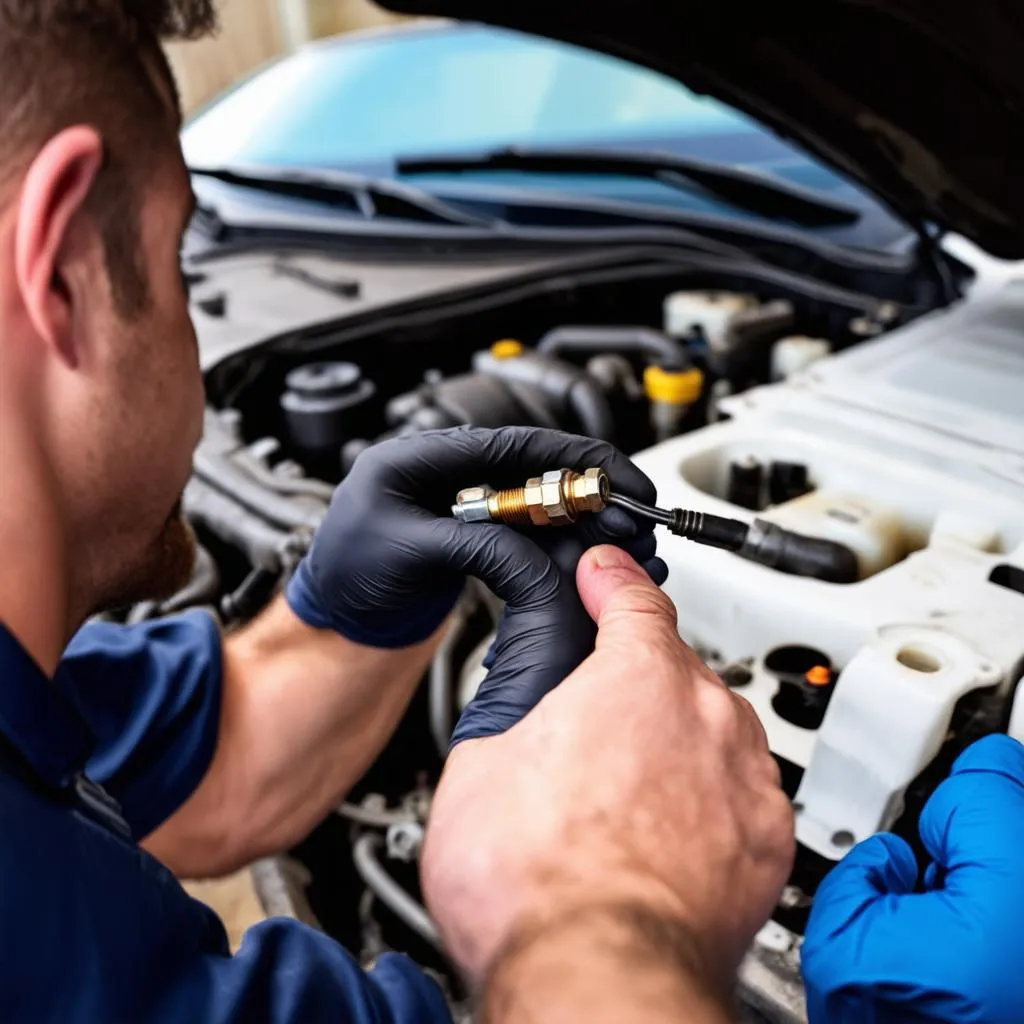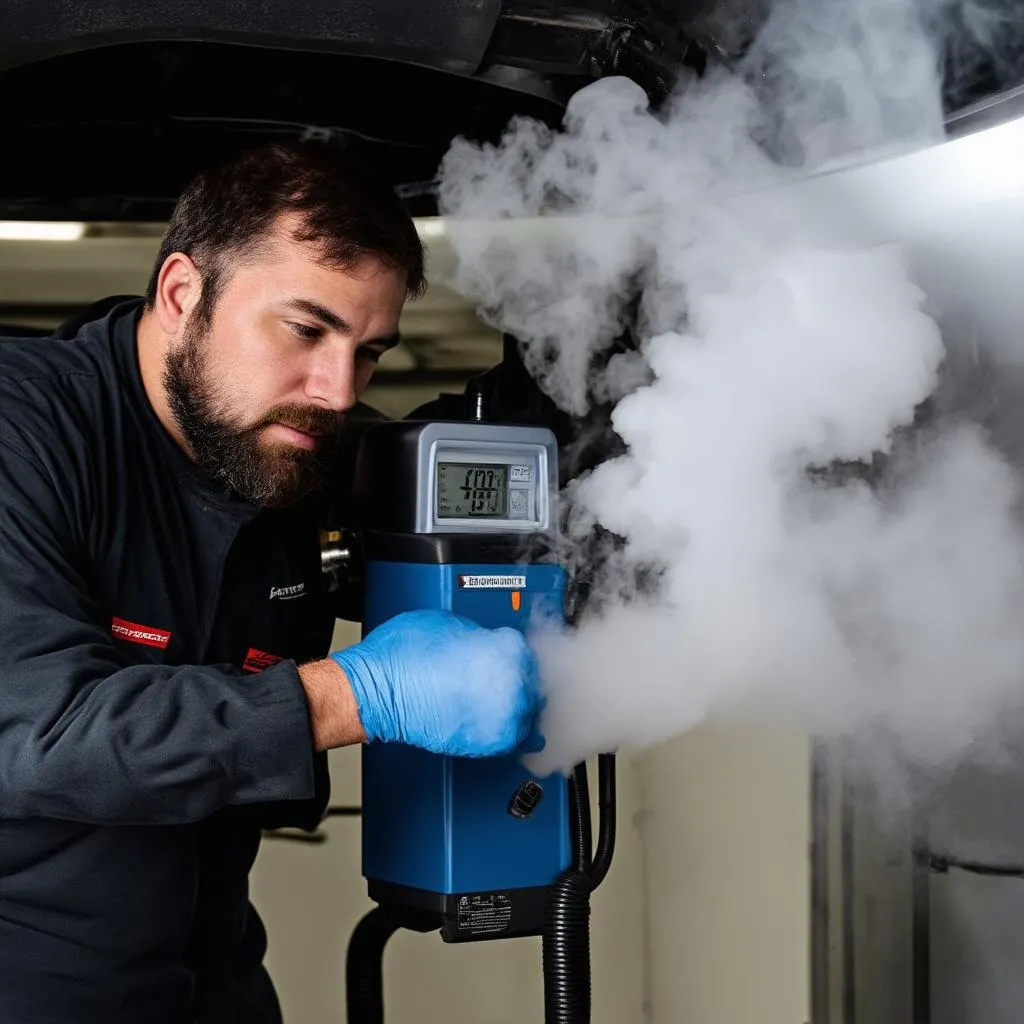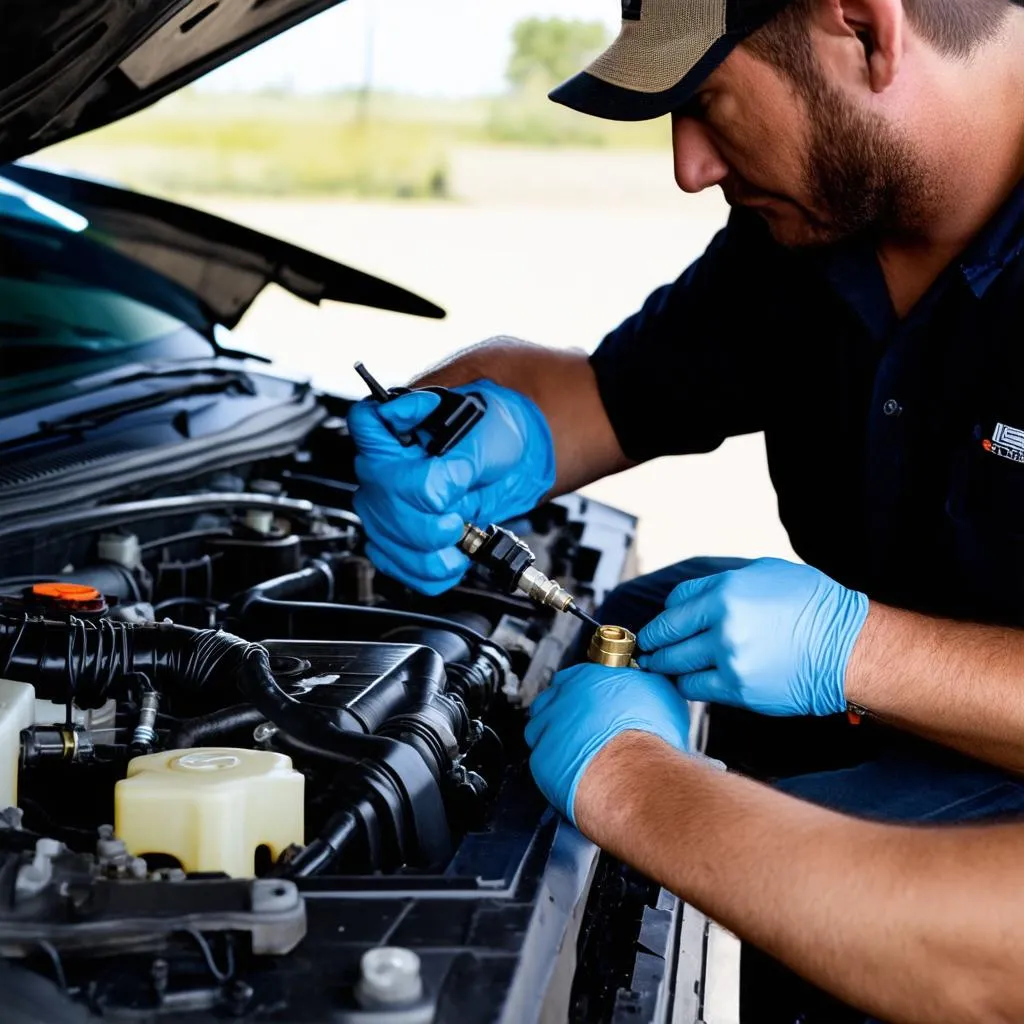Have you ever been driving your Ford and the “Check Engine” light comes on? It’s a frustrating experience, especially when you don’t know what’s wrong. One of the most common OBD codes you might see is P1131, and it’s related to a problem with your vehicle’s oxygen sensor.
What Does Ford Obd Code P1131 Mean?
The OBD code P1131 is a diagnostic trouble code (DTC) that indicates a “Lean Condition at Bank 1 Sensor 1”. This means the engine control unit (ECU) has detected that the air-fuel mixture in the engine is too lean.
But what does that actually mean? Think of the engine as a fire. You need just the right amount of fuel and oxygen for the fire to burn efficiently. Too much fuel, and the fire will smoke. Too much oxygen, and the fire will burn too quickly and might even sputter out. The oxygen sensor (O2 sensor) is like a firefighter, constantly monitoring the fire and sending signals to the ECU to adjust the amount of fuel and oxygen needed for a good burn.
When the ECU detects a lean condition (too much oxygen), it throws a P1131 code. This could be caused by a number of things, including a faulty O2 sensor, a leak in the vacuum system, or a problem with the fuel injectors.
Why Understanding OBD Code P1131 Is Essential
Think of it this way: Just like a doctor needs to understand your symptoms to diagnose an illness, your mechanic needs to understand what your car is trying to tell you through the OBD codes. Understanding OBD code P1131 is essential because it could affect the performance of your vehicle. A lean condition can lead to:
- Reduced fuel economy – The engine has to work harder to burn the fuel efficiently, leading to lower gas mileage.
- Increased emissions – A lean condition produces more harmful emissions, contributing to air pollution.
- Engine damage – A lean condition can cause the engine to run hot and damage internal components.
Common Causes of Ford Obd Code P1131
1. Faulty Oxygen Sensor
The O2 sensor is one of the most common culprits behind the P1131 code. It can become contaminated, corroded, or simply fail, impacting its ability to accurately measure the oxygen levels in the exhaust stream.
2. Vacuum Leaks
Think of a vacuum leak as a small hole in your engine’s air supply. Air leaks into the system, making the fuel mixture leaner than intended.
3. Fuel Injector Problems
Fuel injectors spray the fuel into the engine’s cylinders. If a fuel injector is clogged or malfunctioning, it may not be able to deliver the correct amount of fuel, leading to a lean condition.
4. Air Intake Leaks
Just like a vacuum leak, an air intake leak lets air into the engine’s air intake system, making the fuel mixture lean.
5. Damaged Wiring
Damaged wiring to the O2 sensor or the ECU can also cause P1131 code. It can lead to incorrect signals and misinterpretations of the oxygen levels.
What to Do When You See Ford Obd Code P1131
The best course of action is to take your vehicle to a qualified mechanic for a proper diagnosis and repair. Here’s what your mechanic will likely do:
- Inspect the O2 Sensor – They will check for any signs of damage or contamination on the O2 sensor.
- Check for Vacuum Leaks – The mechanic will use a vacuum gauge or a smoke machine to detect any leaks in the vacuum system.
- Test the Fuel Injectors – They will test the fuel injectors to ensure they are working properly and delivering the correct amount of fuel.
- Inspect the Air Intake System – The mechanic will look for any leaks or cracks in the air intake system.
- Check the Wiring – They will inspect the wiring to the O2 sensor and ECU for any damage.
Tips for Preventing Ford Obd Code P1131
Here are some tips to help prevent the P1131 code from occurring:
- Regular maintenance: Regular servicing is crucial to prevent problems. Change your oil and air filter regularly.
- Use quality fuel: Use high-quality fuel to prevent contamination and minimize the risk of injector issues.
- Don’t ignore warning lights: If you notice the “Check Engine” light is on, don’t ignore it. Get it diagnosed promptly.
Common Questions About Ford Obd Code P1131:
- Is P1131 a serious problem? It’s not necessarily a critical issue, but it should be addressed promptly to avoid potential engine damage.
- Can I reset P1131 myself? While you can reset the code using an OBD2 scanner, it won’t solve the underlying problem.
- Can I drive my car with P1131? You can drive your car for a short distance, but it’s not advisable to drive it for extended periods.
What Experts Say About Ford Obd Code P1131:
- “A lean condition can be caused by a number of factors, but the most common is a faulty O2 sensor.” – Dr. Charles Evans, Automotive Engineering Professor
- “It’s important to address this code promptly to prevent more serious engine problems. It’s like ignoring a nagging cough – it might be nothing, but it could also be something serious.” – Mr. John Smith, Certified Automotive Technician
Ford Models Affected by P1131:
This code is common across various Ford models. Here are some examples:
- Ford Focus
- Ford Escape
- Ford F-150
- Ford Mustang
More Information About OBD Codes:
For more information on OBD codes and troubleshooting, visit our website at https://techcarusa.com/, or read our other articles:
- https://techcarusa.com/2002-ford-f150-obd-code-p1131/
- https://techcarusa.com/ford-obd-p1151/
- https://techcarusa.com/1996-ford-mustang-obd-ii-code-p1143/
- https://techcarusa.com/ford-fusion-obd-codes/
Need Help with Ford Obd Code P1131?
If you’re experiencing problems with your Ford and need help diagnosing and fixing the P1131 code, don’t hesitate to contact us. We have a team of certified mechanics ready to assist you.
Contact us via Whatsapp: +84767531508
 oxygen sensor inspection
oxygen sensor inspection
 vacuum leak detection
vacuum leak detection
 fuel injector testing
fuel injector testing